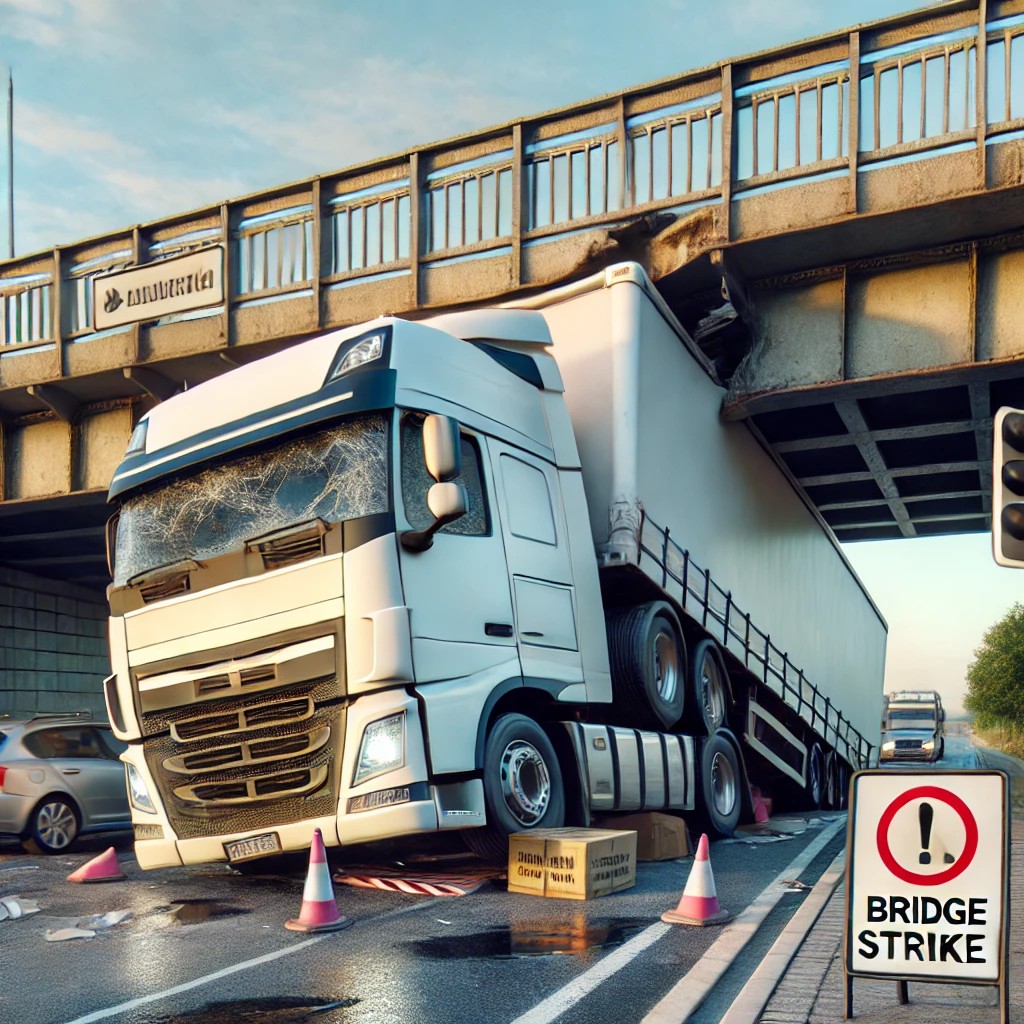Bridge strikes have long been a persistent issue for the UK road transport and logistics industry, resulting in costly delays, infrastructure damage, and significant safety risks. While recent statistics show a promising downward trend, there is still a considerable need for further action and ongoing education within the sector.
Bridge Strike Statistics Over the Years
Analysis of recent data reveals a fluctuating yet overall downward trend in bridge strikes:
- 2019/2020: 1,825 strikes
- 2020/2021: 1,650 strikes
- 2021/2022: 1,864 strikes
- 2022/2023: 1,588 strikes
- 2023/2024: 1,523 strikes
Although the decrease in incidents from 1,825 in 2019/2020 to 1,523 in 2023/2024 is encouraging, the persistent number of strikes highlights that the issue is far from resolved. The sharp increase seen in 2021/2022 serves as a reminder of the need for sustained efforts to mitigate these occurrences.
Causes and Impact of Bridge Strikes
Bridge strikes often result from insufficient planning, driver inexperience, or lack of awareness. Key contributing factors include:
- Failure to consider vehicle height during route planning
- Misinterpretation of signage or inadequate road signs
- Insufficient driver training or attentiveness
The consequences of bridge strikes are extensive:
- Infrastructure Damage: Repairs and inspections place a significant financial burden on authorities.
- Operational Disruption: Delays caused by strikes disrupt schedules and increase costs for businesses.
- Safety Hazards: Bridge strikes pose a danger to all road users and can result in severe accidents.
Effective Measures to Prevent Bridge Strikes
The recent decline in incidents reflects positive steps taken by the industry. These include:
- Advanced Route Planning Tools: GPS systems and apps designed to account for vehicle height and bridge clearances are becoming more common.
- Driver Training Programs: Enhanced training sessions focus on educating drivers about vehicle dimensions and proper route planning.
- Improved Signage: Authorities are investing in more transparent, more visible signage to reduce confusion.
- Awareness Campaigns: Initiatives like Network Rail’s "Lorries Can’t Limbo" campaign have helped raise awareness about the risks of bridge strikes.
4 Practical Tips to Prevent Bridge Strikes
Reducing bridge strikes requires both operational diligence and driver vigilance. Here are four essential tips:
- Know Vehicle Dimensions: Drivers must be fully aware of their vehicle’s height and width, including any changes due to loaded cargo.
- Plan Routes Effectively: Use reliable tools to identify safe routes, avoiding roads with height restrictions.
- Observe Signage: Drivers should consistently look out for and comply with clearance warning signs.
- Commit to Training: Regular education on bridge strike prevention should be a mandatory part of driver development programs.
Future Actions for Further Improvement
Despite recent progress, bridge strikes remain a pressing challenge. To reduce incidents further, the industry needs to:
- Leverage Technology: Promote the use of telematics and driver assistance tools to enhance route safety.
- Strengthen Compliance Measures: Integrate bridge strike prevention into regular compliance and audit processes.
- Expand Driver Education: Make bridge strike prevention a standard part of CPC training.
- Collaborate Proactively: Partner with councils and transport bodies to identify and address high-risk areas.
- Encourage Incident Reporting: Collect data on near-misses to inform preventative strategies.
Conclusion
The reduction in bridge strikes from 1,825 in 2019/2020 to 1,523 in 2023/2024 is a promising sign of progress. However, the persistence of over 1,500 annual incidents underscores the ongoing need for vigilance and innovation. By prioritising education, technology, and collaboration, the transport industry can continue to reduce these occurrences and improve safety on UK roads.
For expert support in transport compliance and safety, visit LDP Transport Consultancy or Hauliers Hub.










